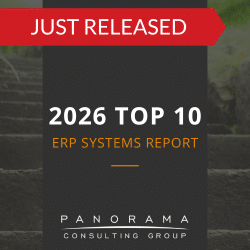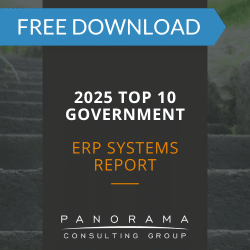As we outlined in the four-part series of our 2008 ERP Report, most ERP projects go over budget, take longer than expected, and fail to deliver expected benefits. Based on this research of 1,300 ERP implementations across the globe, there are three common things that are likely to cause an ERP projects to fail:
- Choosing the wrong ERP software. Companies with failed ERP initiatives often try to force fit an ERP solution that isn’t right for their organization. Many organizations incorrectly assume that there are only a handful of viable options in the marketplace. There are dozens of viable ERP solutions, some focused on specific industry verticals that may be able to handle your specific business requirements more effectively than the better known packages. In addition, even for organizations that are considering only Tier I solutions, it is important to clearly define business requirements and have a thorough understanding of the solutions’ ability to meet those needs. These activities should be an integral part of your ERP software selection approach.
- Setting unrealistic implementation duration and cost expectations. As we often tell our clients, vendor sales reps make a living by selling software, not by setting realistic implementation expectations. The successful ERP initiatives in our study were much more likely to leverage internal and/or external expertise to help define a realistic and customized implementation plan and budget rather than rely on canned materials from a sales proposal. This should be a key part of your ERP selection and planning process.
- Failure to manage the ERP software vendor and ERP project scope. Once an ERP solution is selected, the real work begins. It is ultimately up to the implementing company – not the ERP vendor – to ensure the project is a success. Although the vendor and other third party consultants will bring valuable expertise to the project, organizations need to manage them as they would any other vendor or employee. This includes effectively managing project controls, customization requests, project scope, implementation strategy, etc. The ERP implementation planning process is an important first step, but the implementing company needs to carefully manage all aspects of the project throughout implementation.
Companies that successfully address the above three areas are much less likely to experience failed ERP implementations. More importantly, these three steps will get your organization started on the path to ERP success and benefits realization.













